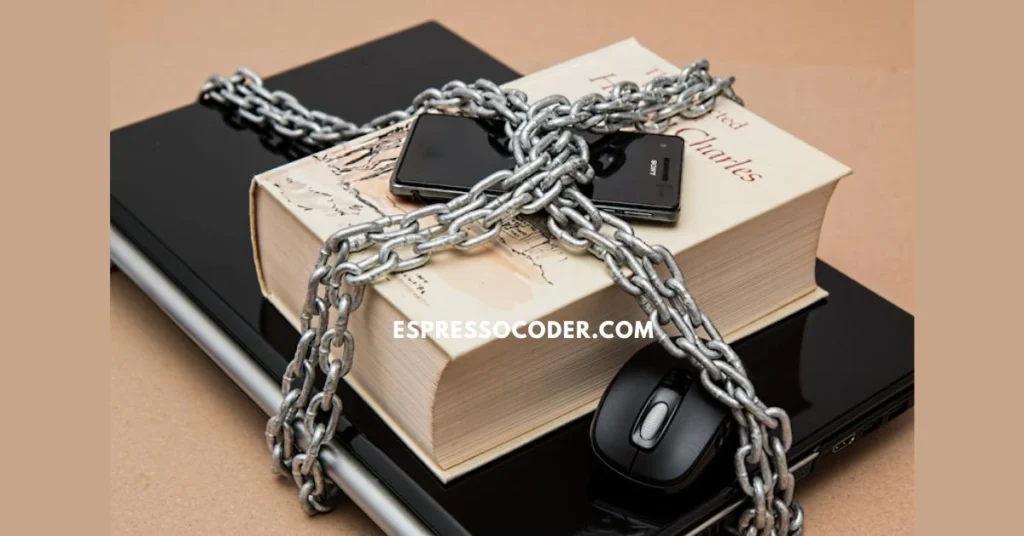Want to protect your creative work in today’s digital chaos?
The digital age has completely transformed how intellectual property gets created, shared, and yes… stolen. Every business owner, content creator, and innovator faces the same brutal reality.
Here’s the problem:
Ideas, creations, and innovations are more vulnerable than ever before. Digital piracy costs the global economy between $29.2 and $71 billion annually, and that’s just the beginning.
Without proper IP protection, creative work gets given away for free.
Here’s everything you need to know about intellectual property rights in the digital age – from the latest threats to the protection strategies that actually work.
Contents
What you’ll learn:
- The Current State of Digital IP Rights
- Why Traditional IP Laws Are Failing
- The AI Revolution and IP Ownership
- How to Protect Digital Assets
- The Future of Intellectual Property
The Current State of Digital IP Rights
Digital intellectual property protection is a complete mess right now.
Here’s why: The internet makes it ridiculously easy to copy, distribute, and monetize other people’s work. Whether it’s software, movies, music, or written content, nothing is safe from digital pirates.
Want to know how bad it is? Over 230 billion pirated videos are viewed each year, while illegal streaming services account for more than 80% of global online piracy.
That’s billions in lost revenue for creators and businesses worldwide.
But here’s what most people don’t understand…
Digital piracy isn’t just teenagers downloading movies. It’s a sophisticated criminal enterprise that undermines innovation, destroys jobs, and makes it harder for legitimate businesses to compete.
When businesses face IP theft, they often need specialized legal support – whether that’s from a technology lawyer or a North Carolina criminal defense lawyer when IP theft crosses into criminal territory.
Pretty serious stuff, right?
Why Traditional IP Laws Are Failing
Traditional intellectual property laws were designed for a world that no longer exists.
Think about it: Copyright laws were created when you had to physically print books or press vinyl records. Patent laws assumed inventors worked in labs, not on laptops connected to global networks.
The digital age changed everything.
Now creators can publish work instantly to billions of people. AI can generate content in seconds. And pirates can copy and distribute that content faster than you can say “copyright infringement.”
The legal system is scrambling to catch up, but it’s moving at the speed of government bureaucracy while technology advances at the speed of light.
That’s why 38% of consumers still access music through copyright infringement, despite decades of anti-piracy efforts.
The AI Revolution and IP Ownership
Want to know what’s really going to blow your mind?
Artificial intelligence is completely rewriting the rules of intellectual property ownership. We’re talking about machines that can write articles, create art, compose music, and even invent new technologies.
Here’s the million-dollar question: Who owns the rights to AI-generated content?
The courts are still figuring this out. Some argue that AI-generated work should belong to the person who provided the prompt. Others say it should go to the company that created the AI. Still others claim AI-generated content shouldn’t be protected at all.
This isn’t just theoretical anymore. Companies are already using AI to generate everything from marketing copy to product designs.
If you’re not thinking about AI and intellectual property rights, you’re already behind.
How to Protect Digital Assets
Protecting intellectual property in the digital age requires a completely different approach than traditional IP protection.
Here’s what you need to do:
Register Everything Early
Don’t wait until an idea becomes successful to protect it. Register copyrights, trademarks, and patents as soon as possible.
The digital world moves fast, and first-to-file wins.
Monitor IP Online
You can’t protect what you don’t know is being stolen. Use automated monitoring tools to track unauthorized use of content across the internet.
Google Alerts is free and surprisingly effective for basic monitoring.
Use Digital Rights Management (DRM)
DRM technology can prevent unauthorized copying and distribution of digital content. It’s not perfect, but it’s better than leaving content completely unprotected.
Create a Paper Trail
Document everything about the creative process. Keep timestamped files, save draft versions, and maintain detailed records of work.
This evidence becomes crucial if you need to prove ownership in court.
Work with Specialized Legal Services
Digital IP protection requires specialized expertise. Law firm services that understand both technology and intellectual property law are essential for navigating this complex landscape.
The Future of Intellectual Property
The future of intellectual property rights is going to be wild.
We’re already seeing new legislation being introduced to address AI-generated content. The European Union’s AI Act is setting global standards for AI regulation. Countries are updating their copyright laws to address digital piracy.
But here’s what’s really interesting…
Blockchain technology could revolutionize IP protection by creating immutable records of ownership and creation. Smart contracts could automatically enforce licensing agreements. And AI could help detect IP infringement faster than ever before.
The companies and creators who adapt to these changes will thrive. Those who stick with outdated protection strategies will get left behind.
Common IP Mistakes to Avoid
Most people make these critical mistakes when protecting their intellectual property:
Waiting too long to file: By the time you realize you need protection, someone else might have already claimed your idea.
Ignoring international protection: US copyright doesn’t protect you in China or Europe. You need international protection for global business.
Assuming fair use protects you: Fair use is a narrow legal defense that most people completely misunderstand.
Not monitoring IP: If you don’t know your IP is being stolen, you can’t stop it.
What This Means for Business
Intellectual property protection isn’t just about preventing theft – it’s about building value.
Companies with strong IP portfolios are worth more, attract more investors, and have better competitive advantages. They can license their technology, franchise their brands, and monetize their innovations.
The bottom line?
In the digital age, intellectual property is the most valuable asset. Protect it like business depends on it – because it does.
Wrapping It Up
Understanding intellectual property rights in the digital age isn’t optional anymore. It’s essential for survival in today’s economy.
The digital revolution has created incredible opportunities for creators and innovators. But it’s also created new threats that can destroy years of hard work in minutes.
Here’s what you need to remember:
- Digital piracy is a billion-dollar problem that affects everyone
- Traditional IP laws aren’t designed for the digital age
- AI is creating new questions about IP ownership
- Protection requires proactive monitoring and enforcement
- The future belongs to those who adapt quickly
Don’t wait until it’s too late. Start protecting intellectual property today, because tomorrow might be too late.
The digital age has changed everything about how we create, share, and protect intellectual property. Those who understand these changes will thrive. Those who don’t will become cautionary tales.
Pretty cool, right?

